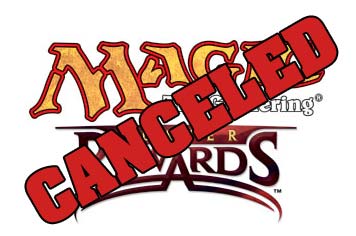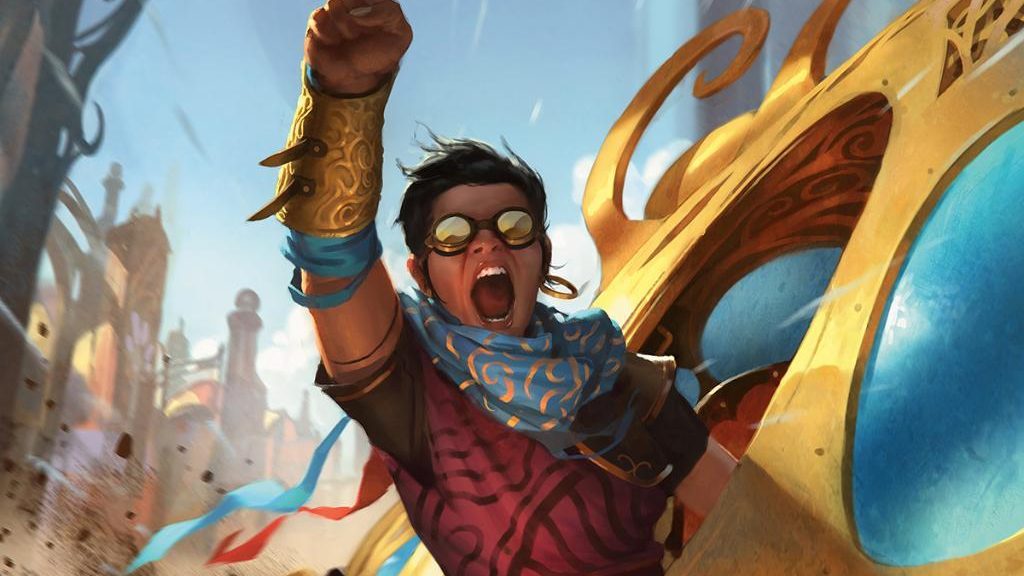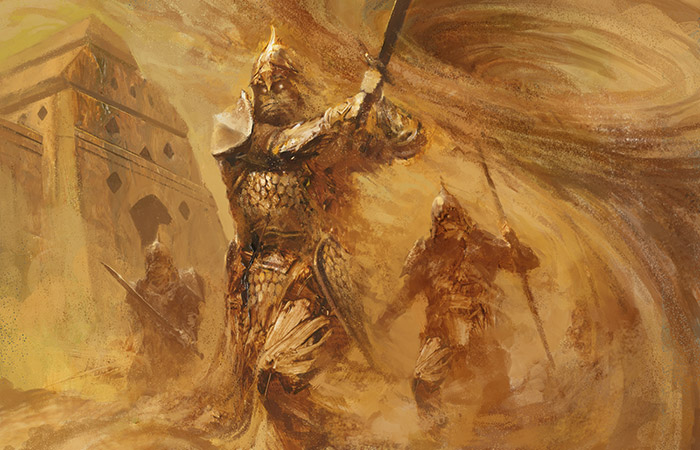Based on interviews and anecdotal evidence from the last few months it has become clear that Standard, the primary constructed format of our beloved Magic: The Gathering, is in a spot of trouble.
Reports from LGS operators have outlined a Standard landscape exhibiting clear signs of weakening participation. Whether this has roots in the decision last year (now reversed) to shorten the Standard rotation schedule from 24 months to 18 months (based on large fall set rotation as the anchor set), or the fact that Standard this fall has devolved to a binary star system where anyone not playing UW Flash or GB Delirium is probably doing it wrong (despite early results from RW Vehicles and resurgent online results from GR Aetherworks Marvel). WoTC has clearly taken notice and has expressed their concerns through the launching of various in store promotional efforts (so-called Treasure Chest packs and Buy a Box promotions) as well as the aforementioned reversal of the rotation schedule.
It is important to remember that the persistent perfection of the Standard metagame is a highly elusive and magical beast, and not one we can expect to be present at all times. The format has endured similarly poor environments before (including the Mono Blue vs Mono Black decks of Theros block), only to bounce back as the printing of new sets refreshed the meta and got people excited again.
Nevertheless, it seems to me that WoTC is leaving too many opportunities on the shelf. As one of the dual pillars, along with a fun draft format, of persistent in store participation and product purchase, a strong Standard represents strong game health. Sure, Modern and Legacy are solid scenes in many places, but those players have a reduced need for new cards, and often have collections deep enough that they can trade for anything new they might need. Hence, the reason that both tournament organizers and the company have pulled back from Legacy and may one day refresh the component sets of Modern to keep the purchasing cycle flowing.
Here are a few ideas that I think are worth exploring by WoTC as they contemplate the continued health of the game vis a vis a more exciting Standard paradigm:
DCI Player Rewards Program Redux
As a marketing professional, the current handling of the DCI program is a bit mystifying to me. Here we have a process that registers every participant in every sanctioned tournament both large and small, across the globe, and yet somehow Wizards hasn’t taken the obvious next step and turned our DCI numbers into a full fledged rewards and sales tracking program.
Why would this be of use? Well, for a number of reasons.
At present, the company is able to gather some very detailed information on participation levels at every participating LGS across the planet, and as such, can spot early trends in things like Standard participation levels by cross-referencing this against store and distributor level sealed product sales data to get a pretty good sense of what is happening in the community at the retail level.
What’s missing however is a greater sense of purpose and community and a more predictable measuring stick for brand loyalty and buying habits. In 2016 most gaming stores are using a digital inventory/accounting system to track sales but both the LGS owners and Wizards are missing out on the wealth of data that would come from connecting the specific sales data to the DCI number of each player.

Specifically, I’m proposing that every time we purchase something at our LGS the sale is connected to our DCI account, providing a wealth of data on our purchasing and play habits that can be mined to better shape in store promotions, set designs and marketing efforts.
It’s one thing to know that Timmy played in pre-release tourneys twice this year, and drafts once a month. It’s quite another to know that his exact spend across two LGS locations is $1845.32 this year, that he tends to purchase 60% of his singles on Friday night after he gets paid, and that he stops drafting for a few weeks when his pockets get drained by supplemental product releases and that he showed up to twice as many FNM events during periods when the promo card was one of the top ten most purchased cards of the season. Training staff to ask a simple “what format are you buying that for” would generate a massive amount of good data.
Picture getting an email inviting you back to play Standard when the system detects you haven’t showed up for a few weeks, complete with a coupon for a product they know you like and a reminder that the cards you need for your Metalwork Colossus deck are back in stock and on sale. This is the kind of total player life-cycle management that is currently absent in the game.
Sharing some of this data with the LGS owners via a shared dashboard can only enrich their own ability to better manage all aspects of their Magic business, while providing a fresh layer of trust and transparency with HQ.
From the player perspective, we would trade a minor invasion of privacy for frequent player rewards in the form of coupons, discounts, free event entry and/or (better) promotional cards or other products. At Face to Face Games here in Toronto, we already make good use of a “buy 8 tourneys, get one free” style rewards card, but this kind of thing is just the tip of the iceberg versus what is possible when a program of this type is supported from the top and refined over time based on constant data gathering.
Standard Leagues
In the amateur sports and gaming world, it is entirely common to declare a league schedule and expect participants to block off every Tuesday at 7pm to participate in an ongoing series of events.
Pre-release tournaments, FNM (Friday Night Magic) and Game Day events are all expressions of the value of regularly scheduled and well understood models of participation, and the community building that takes place as a result of seeing the same familiar faces at your local store. That being said, we can push this concept farther.
I’d like to see Wizards go the extra mile and declare specific Standard leagues spanning the period from the release of one Standard legal set to the next, perhaps with a week break during spoiler season. Continued participation in these leagues, which would still be drop-in friendly, would reward consistency in both participation and results with promo cards, discounts, accessories, etc.
Picture a Standard League Super Pass, that includes the following for $199.99:
- One booster box of Kaladesh w/ Buy-a-Box promo
- One free Standard legal booster per week
- One set of Kaladesh sleeves
- One Kaladesh deck box
- 12 weeks of league play entry fees
- A 5% in store discount on Standard legal cards during the league (so long as DCI # is associated with sale)
Now clearly, you can tweak the knobs on this machine in any number of different ways, but the core premise is to invite up front commitment from players in exchange for a clear value upgrade. The LGS gets to collect revenues up front and “lock in” participation for the season. They fund the in store discount on singles and most of the prize pool, and WoTC provides the kit for the rest. An optional Invitational style event based on results in the league can be run in the last week of the season, with additional prize support from the LGS/WoTC.
A different version for draft or sealed play should likely also be offered.
Players who want to jump in on the league can do so easily by paying the usual single tournament experience, but the benefits to buying in on the whole league and tying the whole experience together in an easy to understand package would help bridge the gap between FNM style casual nights and the hassle of RPTQ grinding. You can even take this a step further and look at providing PTQ invites to league winners.
Monthly Metagame Boosters
One of the issues with Standard is the possibility for the metagame to be solved early on in the sales cycle for a new set. If the players come to the conclusion that only a couple of decks are viable options, as is happening now and has happened in the past, it tends to dissuade the kind of week-to-week brewing that keeps local Standard tournaments and FNM nights fun and exciting.
The simply reality is that Magic is primarily a game of discovery and most players are much more attracted to unsolved and unfamiliar formats than solved formats. Take the temperature of a room at your local large site pre-release and compare it to a local Standard event during the last week of November 2016, and tell me you can’t feel the difference in the energy level?
One way to ensure that the metagame keeps evolving? Stop releasing sets all at once. Instead, supplement the main set release with periodic micro-set releases, called something like Power Boosters. This concept is likely to generate the most push back, and there are real reasons to doubt it, but hear me out.
These sets could be offered in a limited number of sub-themes such as Madness, Delirium or Vehicles. Marketing can tag them with sexy names like Rage of the Immortals, Rolling in the Deep or Driving the Revolt. If you’re already subscribed to the Fall Standard League Super Pass mentioned above, you get your choice of one of these micro-sets say six weeks after the main release.
(At first I thought a monthly release might be best, but upon further reflection a single burst between sets seems like the simplest and least expensive starting point to help the meta evolve without resetting the table too often.)
How might this impact MTG Finance? Well, for one thing, an ever shifting meta-game makes it harder to sit on staples for profit, since they may not stay staples for as long. In this brave new world a card like Aetherflux Reservoir might be a better bet than pegging your hopes on Gideon, Ally of Zendikar making the move from $20 to $30.
On the other hand, most methods of distribution that leveraged “LGS only” would have the potential to send a card through the roof. To counter this potential, if you were already enrolled in the current Standard League via a super-pass, your choice of the four available Power Boosters would be included in your bundle fees at a discount. Otherwise, players could order additional Power Boosters direct from their LGS for as long as the root set was in Standard.
Each player can order up to X (say 4) of each of the themed micro-sets, and each set contains a full play set of the needed cards. If all of the cards contained within were rares and they were all included in equal numbers, and availability until their root set rotated, that might help counter any tendency for the most important cards to spike too high. Could one of these cards make it’s way into Modern or EDH and end up expensive? Certainly, but the fairly aggressive reprint policy we’re currently living through can help further mitigate that potential and give players a good reason to be playing and collecting via support of their local store.
So what’s the downside?
Well, just off the top we have the cost of producing, printing, distributing and promoting the extra cards. That being said, I suspect that many of these cards would normally get left on the cutting room floor during the trimming of the main set release, so the impact on design/development might not be quite so terrible. Those teams would however need to have a good sense of which themes would need the help via the Future Future League, and there’s always the possibility that they overestimate one theme and underestimate another, resulting in, for instance, an uber-powerful vehicles deck that nothing card stand against.
There is also the fact that this represents significantly more coordination between Organized Play and the store owners, as well as more program management cost. Whether all of that is worth it in the end is merely a guess until you button down the specifics of course, but if I was on the team I’d at least be looking at the option, especially as part of a more refined and powerful DCI Rewards program as described above.
You would also need to figure out how to handle some of the languages and regions that don’t normally get access to supplemental product, but I think the LGS based ordering system would alleviate most of the price and availability pressure while focusing constructed purchasing in on the LGS level.
Would it matter that Wal-Mart never got the Power Booster? I doubt it. The world of the player who never goes near an LGS is very different than the world of an active community member, and the rumor of extra cards available down the street at your local comic shop might be just what is needed to pull you into the fold.
Finally, there is the fact that many Standard seasons were just fine on their own. I played heavily between Khans of Tarkir and Magic: Origins for example, and I felt plenty motivated to show up the entire time. That being said, I’m willing to guess that sales typically slow 4-6 weeks after release for both WotC and the retailers, so a great reason to show up mid-season could be a solid sales booster.
So there you have it. What made sense to you here? What go you angry or excited? Do you have ideas of your own to share?
James Chillcott is the CEO of ShelfLife.net, The Future of Collecting, Senior Partner at Advoca, a designer, adventurer, toy fanatic and an avid Magic player and collector since 1994.


